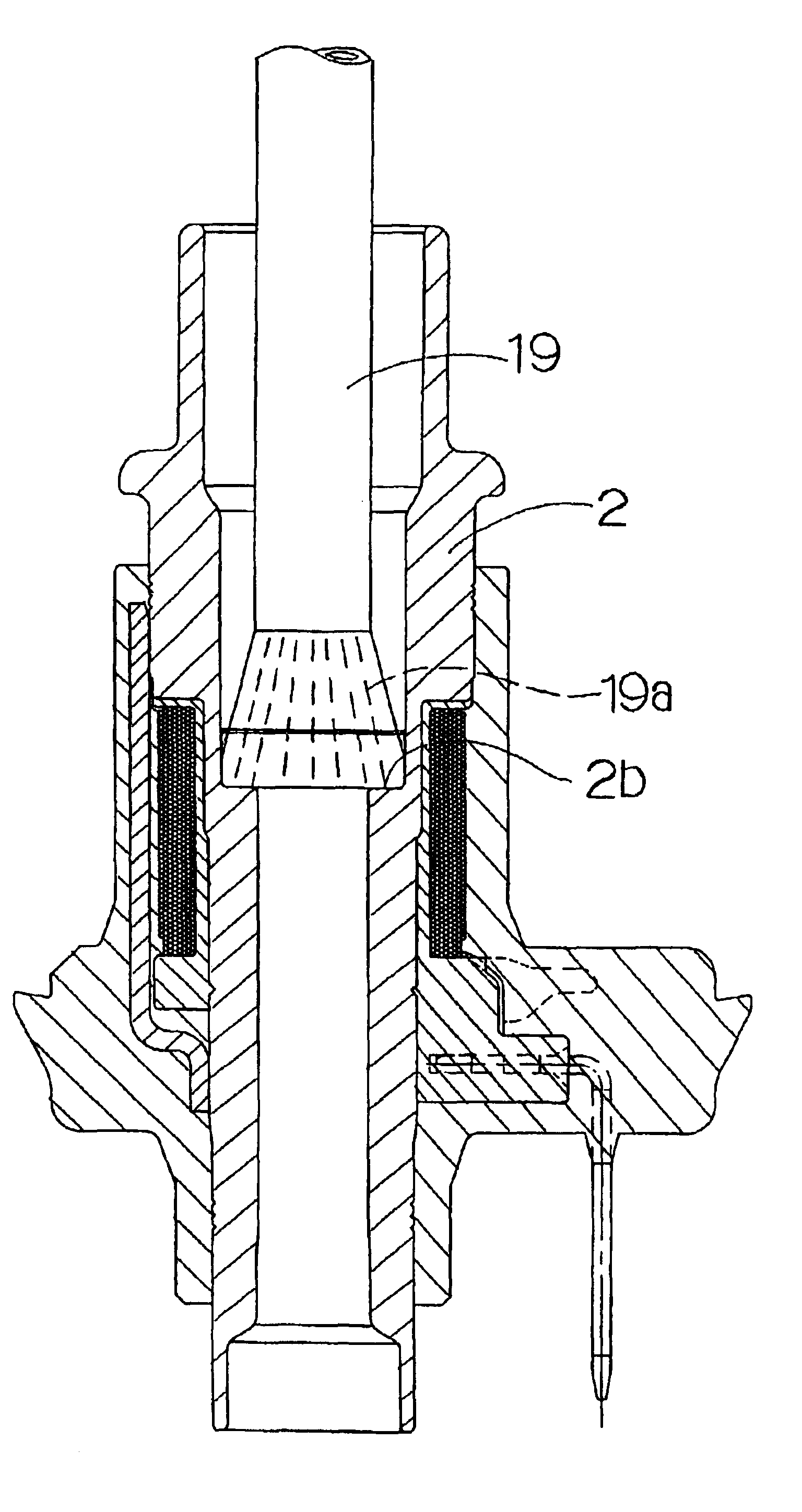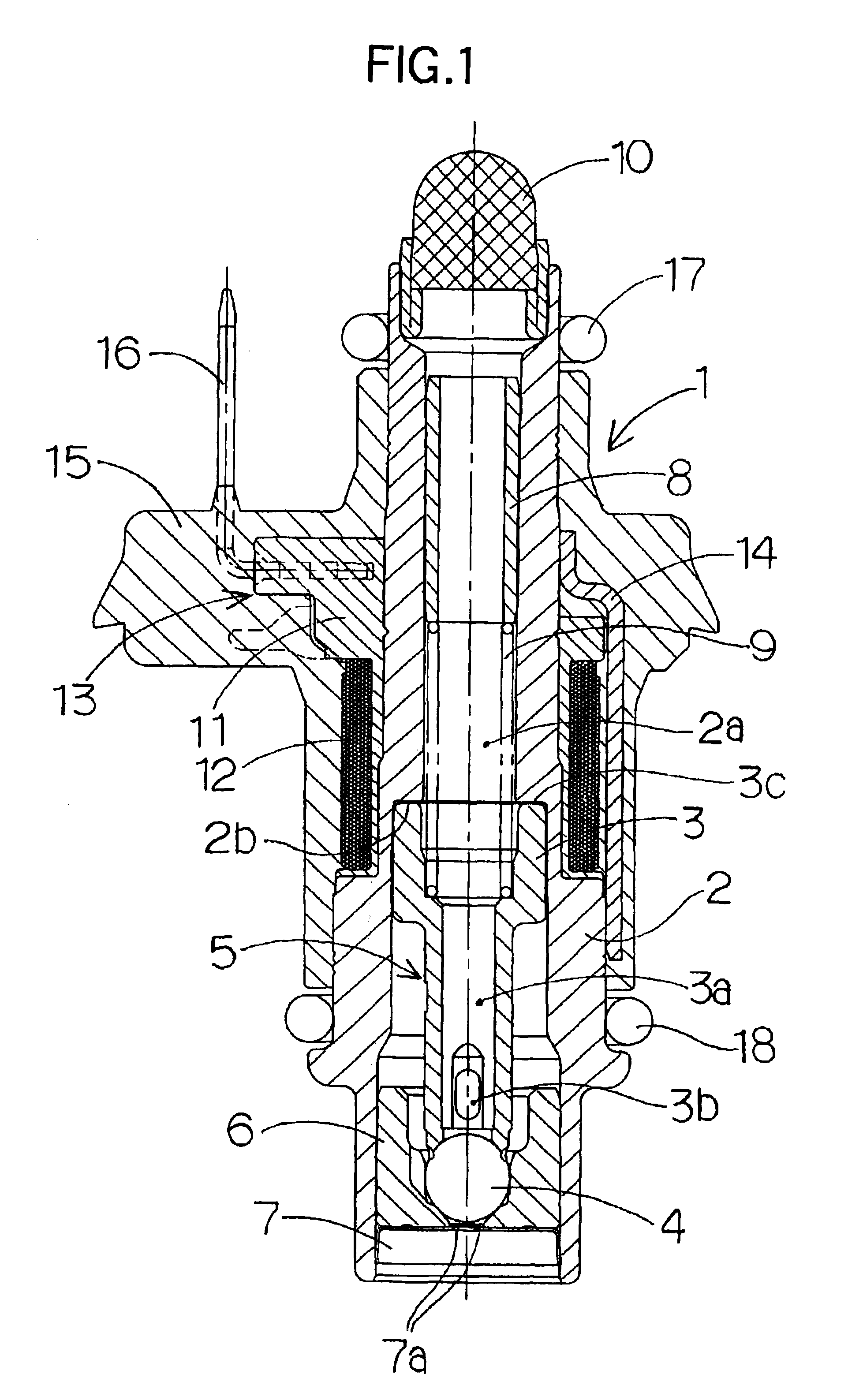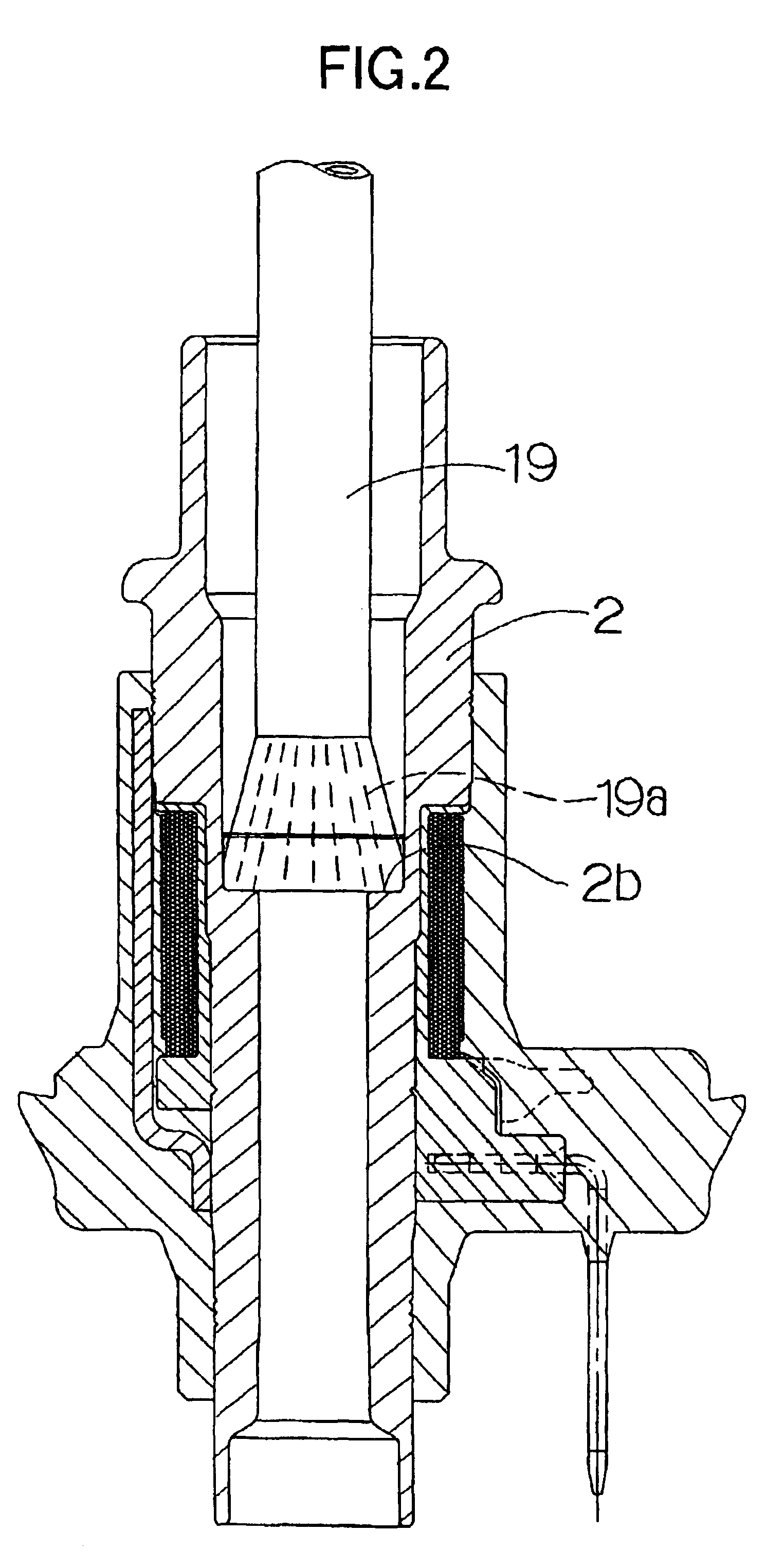Electromagnetic fuel injection valve and method for manufacturing same
- Summary
- Abstract
- Description
- Claims
- Application Information
AI Technical Summary
Benefits of technology
Problems solved by technology
Method used
Image
Examples
Embodiment Construction
[0015]A preferred embodiment of the present invention will be described below with reference to the accompanying drawings. In FIG. 1, a fuel injection valve 1 includes a stationary core 2. The stationary core 2 has a fuel passage 2a provided in the center thereof. An armature (moving core) 3 is slidably disposed in the fuel passage 2a. A fuel passage 3a is provided in the center of the armature 3 to pass fuel. A ball valve (valving element) 4 is secured to the distal end of the armature 3, for example, by welding to constitute a moving valve 5. A communicating hole 3b is provided in the armature 3 near the ball valve 4 to allow fuel to flow to the outside from the fuel passage 3a. A nozzle 7 is secured to the lower opening of the stationary core 2 by press fitting or welding. The nozzle 7 has a valve seat 6 and an injection port 7a. The moving valve 5 is arranged to move between the valve seat 6 and an abutting surface 2b of the stationary core 2 with an appropriate lift (gap). A cy...
PUM
 Login to View More
Login to View More Abstract
Description
Claims
Application Information
 Login to View More
Login to View More - R&D
- Intellectual Property
- Life Sciences
- Materials
- Tech Scout
- Unparalleled Data Quality
- Higher Quality Content
- 60% Fewer Hallucinations
Browse by: Latest US Patents, China's latest patents, Technical Efficacy Thesaurus, Application Domain, Technology Topic, Popular Technical Reports.
© 2025 PatSnap. All rights reserved.Legal|Privacy policy|Modern Slavery Act Transparency Statement|Sitemap|About US| Contact US: help@patsnap.com



